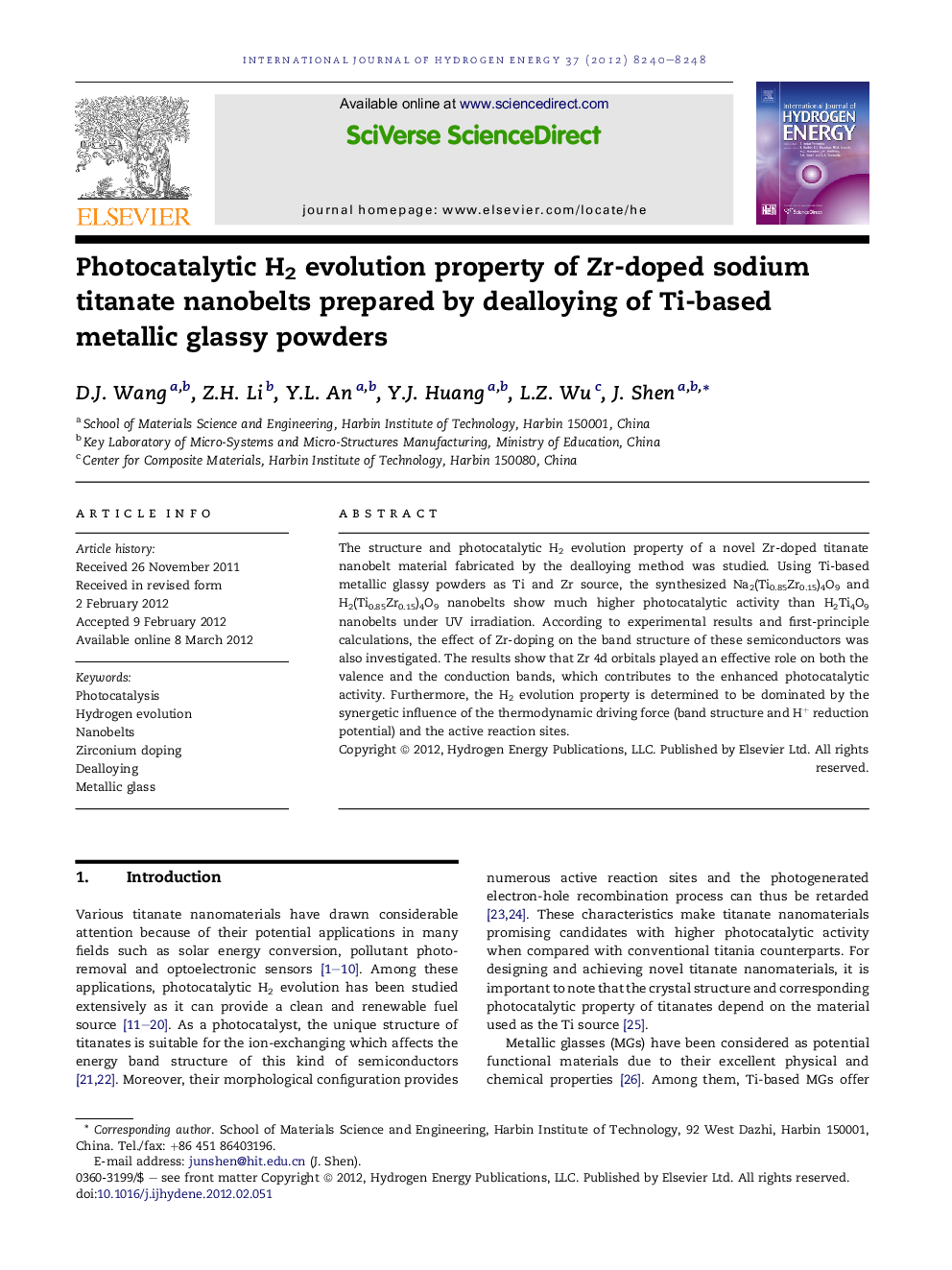| Article ID | Journal | Published Year | Pages | File Type |
|---|---|---|---|---|
| 1275322 | International Journal of Hydrogen Energy | 2012 | 9 Pages |
The structure and photocatalytic H2 evolution property of a novel Zr-doped titanate nanobelt material fabricated by the dealloying method was studied. Using Ti-based metallic glassy powders as Ti and Zr source, the synthesized Na2(Ti0.85Zr0.15)4O9 and H2(Ti0.85Zr0.15)4O9 nanobelts show much higher photocatalytic activity than H2Ti4O9 nanobelts under UV irradiation. According to experimental results and first-principle calculations, the effect of Zr-doping on the band structure of these semiconductors was also investigated. The results show that Zr 4d orbitals played an effective role on both the valence and the conduction bands, which contributes to the enhanced photocatalytic activity. Furthermore, the H2 evolution property is determined to be dominated by the synergetic influence of the thermodynamic driving force (band structure and H+ reduction potential) and the active reaction sites.
► One-pot Zr-doped sodium titanate nanobelts were fabricated by dealloying strategy. ► The doped Zr ions in TiO6 octahedra affect the band structure of the nanobelts. ► The Zr-doped nanobelts show much higher H2 evolution rate than that without doping. ► The factors affecting the H2 evolution property were comprehensively investigated.
